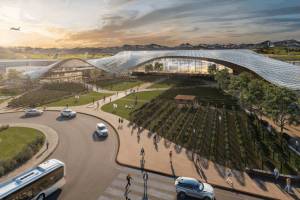
All You Need to Know About the Cape Winelands Airport
Currently operating as a smaller general aviation airfield (formerly known as Fisantekraal Airfield), Cape Winelands...
 22 October 2025
22 October 2025 
With its vast and varied landscapes, abundant wildlife, and great weather all year round, the Namib Desert is a playground for adventurers and outdoor enthusiasts in southern Africa. Much of the Namib-Naukluft Park remains wild and untouched, creating a sense of isolation like nothing else in the world.
Modern infrastructure like well-maintained roads, comfortable lodges, and excellent tour operators make it easy and safe to explore even the most remote regions of the Namib Desert. That means you can hire a 4×4 and enjoy all kinds of adventure excursions, from action sports to bush camping.
At Drive South Africa, we’ve compiled a list of seven of the best Namib Desert adventures. Read on to get inspiration for your travel itinerary.
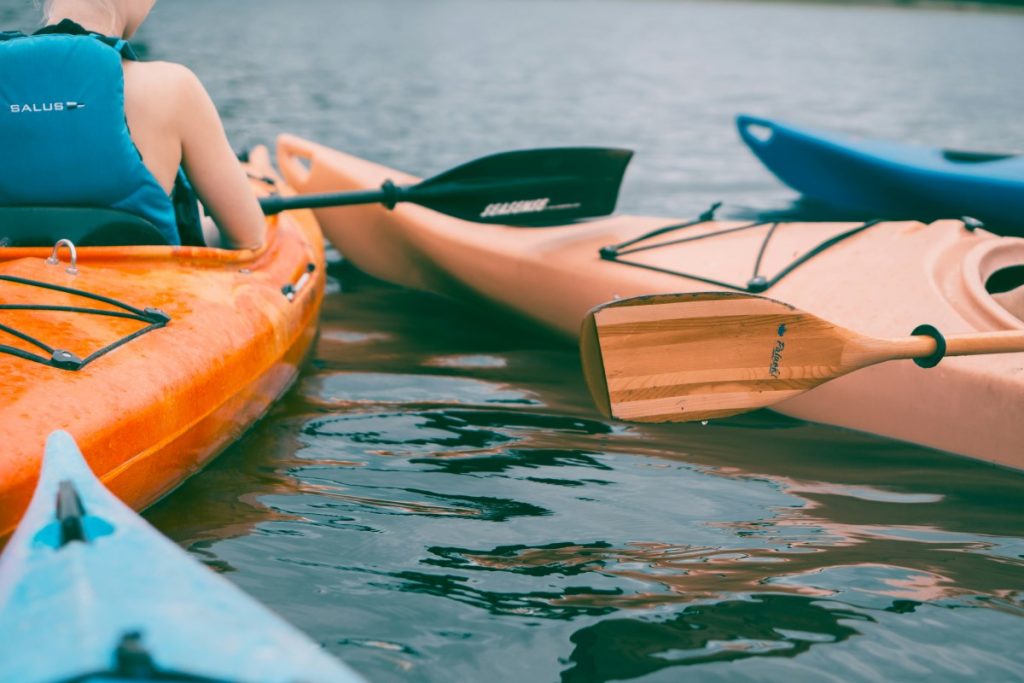
You can rent kayaks at several camps along the Orange River
If you’re hiring a car in South Africa and heading over the border into Namibia, your first stop should be the Orange River. Also known as the Gariep River, it’s the southern gateway to the Namib Desert. The landscape is a combination of sandy slopes and rocky outcrops characteristic of the Richtersveld region.
Despite all the dryness, the Orange River bisects the desert, carrying immense amounts of water towards the river mouth in Alexander Bay. This actually doubles as the border between Namibia and South Africa. And, because it’s always flowing, it’s a world-renowned kayaking and river rafting destination.
Kayaking in Namibia offers adventurers an escape from the intense heat. After all, the closer you get to the Namib Desert, the less water you’ll find. Paddlers of all levels will find something to suit their skills, from gentle trips downstream to more challenging rapids.
For those new to kayaking, tour operators offer guided tours, gear hire, and lessons. Remember to pack quick-drying clothing, a hat, sunglasses, and sunscreen.

Sandboarding near Swakopmund, Namibia
People travel from around the world to see the Namib’s immense red dunes. They get their distinctive red colouration from iron in the sand, which oxidizes over time – like rust. That means the redder the dune, the older it is.
You can choose to climb these dunes on foot, in a 4×4, or on a quad bike, but the sandboarding is undoubtedly the best way to get back down. It’s exciting to explore the vast dunes near Walvis Bay and Swakopmund, turning a quick trip into a full-day adventure.
Tour operators cater to adventurers of all kinds. Experienced riders can head straight for traditional sandboards, but the locals have an ingenious alternative for more cautious travellers: plywood. Beginners can sit on these and ride them down the steep slopes and still have almost as much fun as the experts!
You can rent sandboarding equipment from the tour operators, who will also guide you to the best spots and provide instruction on organised tours. Sandboarding in Namibia is best from May to September when it’s cooler, but you can do it all year round.
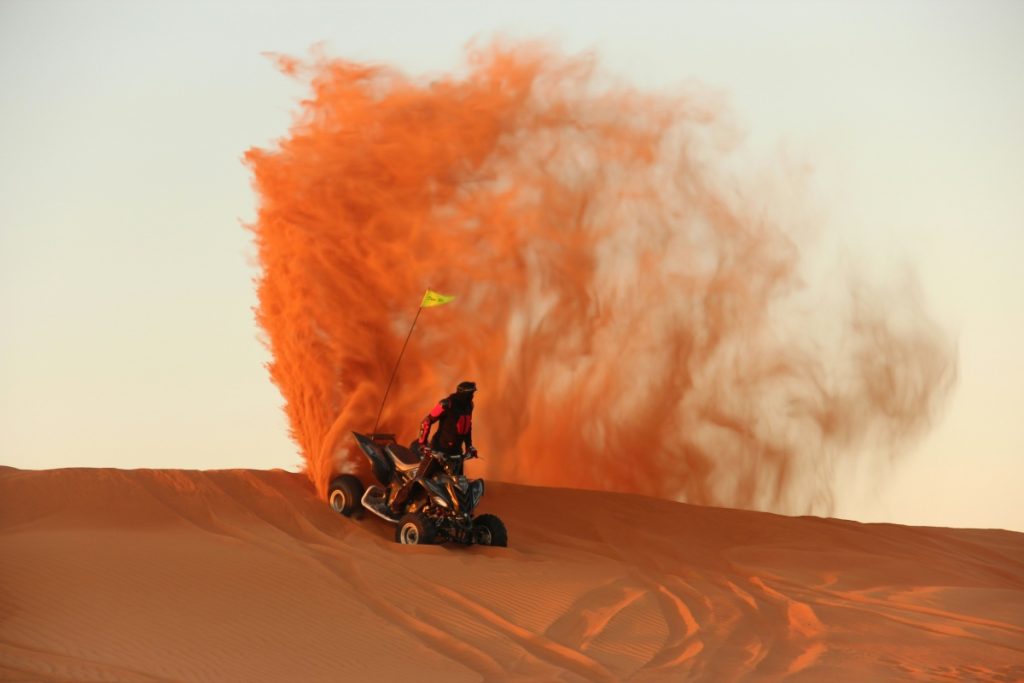
Quad biking in the red dunes of the Namib Desert
Quad biking tours in the Namib Desert take riders though some of Namibia’s most spectacular landscapes, including huge sand dunes, rocky canyons, and coastal plains. The areas near Swakopmund and Walvis Bay offer a variety of quad biking routes, ranging from gentle trails for beginners to challenging dunes for experienced riders.
Tours in Namibia are led by experienced guides who are familiar with the local terrain and can provide instruction and guidance throughout the adventure. Namibian quad biking tours typically use sturdy and reliable quad bikes that are capable of easily navigating sandy terrain.
Your tour operator will supply you with all the equipment you need for a safe and responsible adventure. You can even ask for a manual transmission bike, if you prefer. Tour operators often bundle quad biking with sandboarding, so you can experience both activities in one day.
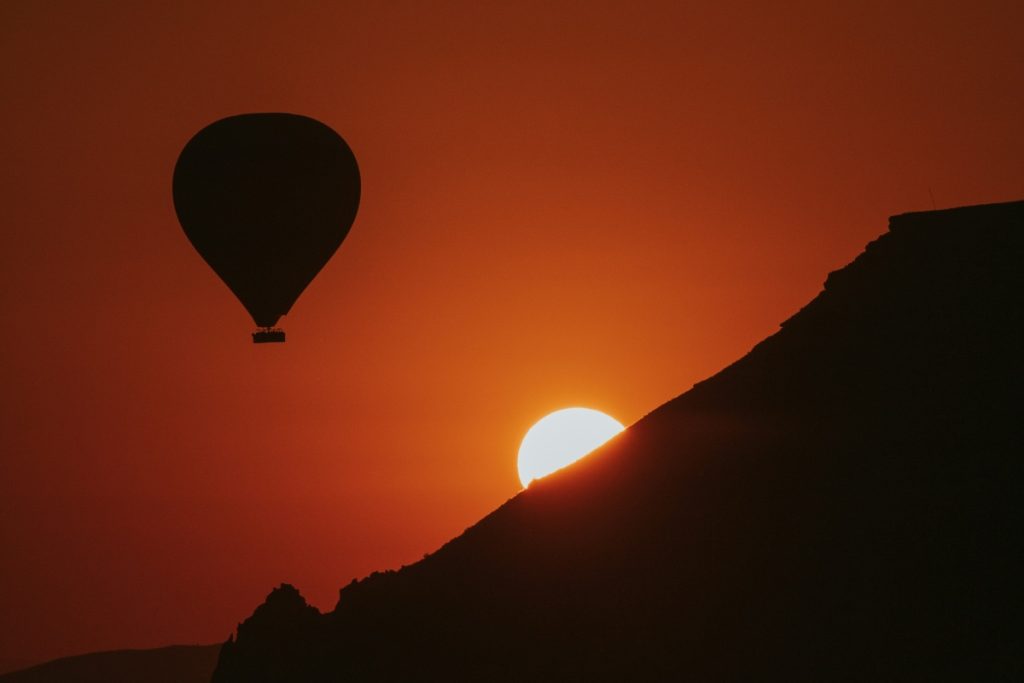
You can watch the sunrise from a hot air balloon near Sossusvlei
Hot air ballooning in Namibia is one way to truly see just how vast the Namib Desert is. These adventures typically take place near the iconic red sand dunes of Sossusvlei, where you’ll get to take in the vast salt pans of Deadvlei and the rugged, lesser-known mountains of the Namib-Naukluft Park.
While other travellers scramble up dunes to catch the sunrise, you’ll arrive at the launch site before dawn and watch the balloon being inflated. Once airborne, you’ll get to enjoy panoramic views of the desert below as the rising sun casts a golden glow on the landscape. Some tour operators even offer a champagne breakfast on touchdown – well worth the extra expense.
During your adventure, you may see animals like oryx, springbok, ostriches, meerkats, jackals, and different types of birds.
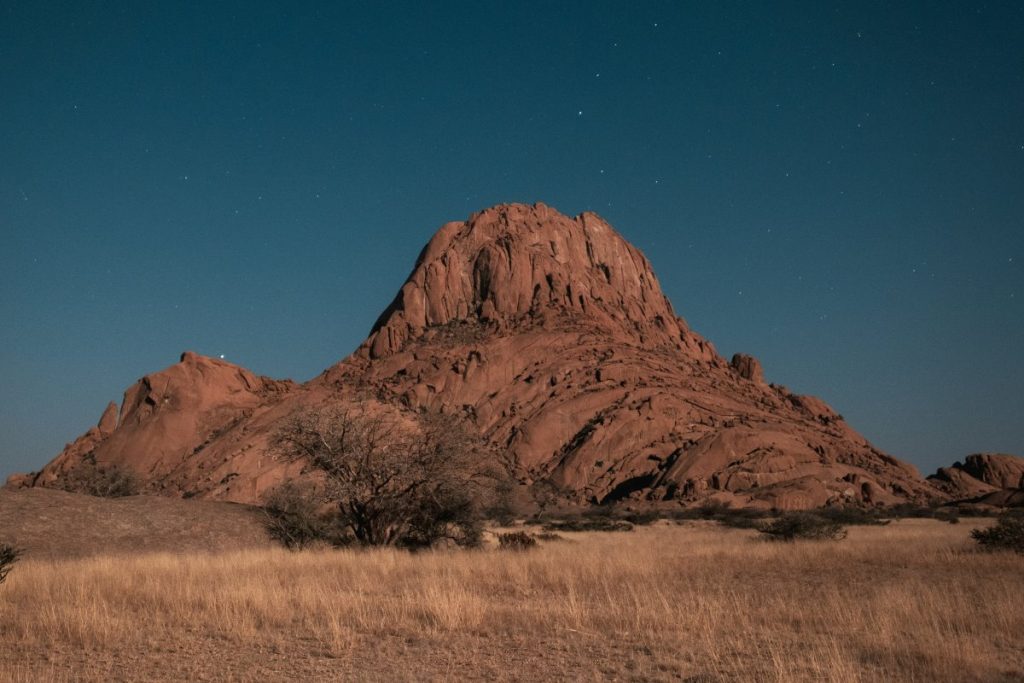
A view of Spitzkoppe, on of Namibia’s most famous mountains
Rock climbing in Namibia, particularly at Spitzkoppe, offers a thrilling adventure surrounded by some of the most breathtaking landscapes in the country. Also known as the “Matterhorn of Namibia”, Spitzkoppe is a dramatic granite peak rising to a height of around 1,728 m (5,669 ft) above sea level.
Don’t worry if you’ve never heard of it – after all, most Namibian itineraries tend to focus on sand more than rock. In reality, the Namib is a varied landscape, peppered with gravelly plains and rocky outcrops.
This epic climbing destination offers a wide variety of routes for climbers of all skill levels, from beginner-friendly routes to challenging multi-pitch climbs. The granite rock formations feature an abundance of cracks, chimneys, and faces, providing endless opportunities for climbers to test their skills and explore new routes.
For those new to climbing or unfamiliar with the area, guided climbing tours are available from local climbing guides and tour operators.

The Fish River Canyon, the second largest canyon in the world
Did you know that Namibia is home to the largest canyon in Africa? The Fish River Canyon lies in the eastern reaches of the Namib, stretching 160 km with a depth of up to 550 m. Hikers come from around the world to tackle the Fish River Canyon Hiking Trail, a five-day, 88 km trek through unmarked wilderness.
This isn’t “slackpacking”, by any means. Hikers need to carry their own water, food, and equipment and there’s virtually no shelter at night. However, that’s all part of the appeal.
It’s also not the only hiking destination in Namibia. You can find other routes in the Namib-Naukluft National Park, the Waterberg Plateau, Spitzkoppe, and the Skeleton Coast. The best time to hike in Namibia is during the cooler months, from April to October.
Hiking in Namibia offers outdoor lovers the chance to explore the country’s diverse landscapes, from rugged mountains and ancient canyons to sprawling desert plains and coastal dunes.

Imagine sleeping under the stars in an outdoor room like this one
There’s not much that can beat sleeping out in a star bed in Namibia. Typically located in remote and secluded wilderness areas far from light pollution, star beds are built on sturdy and secure raised platforms and kitted out with a luxurious bed and bedding. Some star beds include en-suite bathrooms, outdoor showers, and private dining areas.
Star beds offer unparalleled opportunities for stargazing, with Namibia’s clear, unpolluted skies providing breathtaking views of the Milky Way, constellations, and shooting stars. Beyond the night sky, there’s also the chance to safely spot nocturnal wildlife below, such as lions, leopards, hyenas, elephants, owls, and smaller creatures like bushbabies.
Whether you’re falling asleep to the sounds of the wilderness on a honeymoon or going solo, star beds are the ultimate exclusive, luxury adventure.
Namibia’s diverse landscapes, thriving wildlife regions, and ideal weather conditions make it a bucket list destination for all kinds of adventurers. If you’re looking for unique and thrilling experiences in epic settings, start your adventure with Namibian 4×4 hire from Drive South Africa, Africa’s leading car rental service.